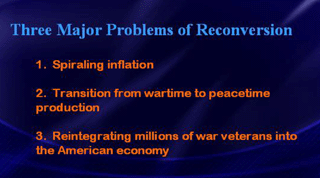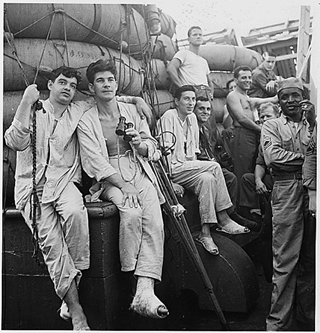Stanley K. Schultz
Professor Emeritus of History
University of Wisconsin-Madison
 |
||||||||
|
|
|
||||||
Reconversion
of the American Economy The second major problem was how to reconvert American industrial production from its wartime to a peacetime basis. Most American business leaders had not anticipated that World War II would come to an end as rapidly as it had. Unaware of the existence of the atomic bomb, politicians and businessmen had thought that World War II, at least in the Pacific, might drag on for another year or more. Many American industrialists had no immediate plans as to how to convert from wartime to peacetime production. That conversion would require time; it would require care in bringing about a smooth transition. Ultimately, through the uneven attempts to switch over from war to peacetime production, the stabilizing force for the American economy proved not to be Harry Truman as much as it proved to be what we spoke about last hour as the growing strength of the "military industrial complex" in America. Military production and defense spending remained at a far higher level than it had ever been before World War II.
The third major problem in the economy was what to do about all of the millions of returning GIs. The United States did not want to see repeated what happened in the aftermath of World War I when the hundreds of thousands of returning doughboys could not regain their prewar jobs or find any kind of employment at all. What to do about the returning soldiers was answered by the Servicemen's Re-adjustment Act, which passed Congress in 1944 and which was expanded in the aftermath. More popularly, that piece of legislation was known as the G. I. Bill. That bill promised massive federal government support of the returning GIs—support for housing, education (either to complete high school or to go to college), health benefits, job training and re-training programs. Clearly, Reconversion was a massive problem. The federal government had to play a major role; nonetheless, the voices that cried to end to wage controls, end price controls, were the voices that were heard. There thus was a very rocky time in an American economy in the late 1940s left to set its own prices, its own wages, its own methods of stopping inflation based upon supposedly free competition and free market capitalism. |
||||||||


